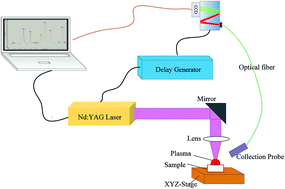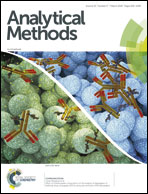Quantitative analysis of sinters using laser-induced breakdown spectroscopy (LIBS) coupled with kernel-based extreme learning machine (K-ELM)
Abstract
This work explores the combination of LIBS technology and K-ELM algorithm for the quantitative analysis of total iron (TFe) content and alkalinity of sinter. The main components of sinter ore samples were qualitatively identified from the National Institute of Standards and Technology (NIST) database. 30 sinter ore samples were compressed into pellets and prepared for LIBS measurements. 20 sintered samples were used as calibration samples, and their LIBS spectral data were used as input variables to construct the calibration model, and the other 10 sinter samples were used as test set samples. In order to verify the prediction ability of the sintered sample calibration model, the performance of a kernel-based extreme learning machine (K-ELM) and partial least square (PLS) models were compared by means of root mean square error (RMSE). The experimental results showed that the K-ELM model is superior to the partial least square regression (PLSR) model in quantitative analysis of TFe and alkalinity, both for the calibration set and the test set. Correlation coefficients obtained by the K-ELM model are above 0.9, and the RMSEs are relatively lower. The method proposed in this paper can quickly and effectively realize quantitative analysis of total iron content and alkalinity in a sinter, and can be used for the analysis and control of metallurgical raw materials, thus reducing analysis time and saving production costs.



 Please wait while we load your content...
Please wait while we load your content...